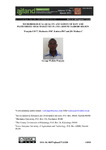Microbiological quality and safety of raw and pasteurized milk marketed in and around Nairobi Region

View/
Date
2017-03Author
Wanjala, G. W
Mathooko, F. M
Kutima, P. M.
Mathara, J. M
Metadata
Show full item recordAbstract
The microbiological quality of raw and pasteurized milk marketed in Nairobi and its environs was determined. Milk samples were collected randomly at milk selling points from three market areas: rural (Kiambu/Ngong), urban (East/West of Tom Mboya street) and slum (Kibera/Mathare). Samples were analysed for titratable acidity, total viable count (TVC), Staphylococcus aureus, coliforms and Enterobacteriaceae. Titratable acidity was determined using titration method, while TVC, S. aureus and Enterobacteriaceae were determined by the spread plate methods and coliforms were determined by most probable number. Data collected were subjected to analysis of variance using Genstat statistical package. The mean acidity was 0.20% lactic acid (LA), while mean counts for TVC, S. aureus, coliforms and Enterobacteriaceae were 6.05, 3.46, 2.30, and 3.93 log10cfu/ml, respectively. The percentage of milk samples with acidity values greater than 0.18% LA, the upper limit set by Kenya Bureau of Standards (KEBS), was 52.8 %. Total viable count (TVC) greater than 106 cfu/ml, was detected in 95.2% and 21.4% of raw and pasteurized milk, respectively. Coliform counts greater than 4.70 and 1.0 log10cfu/ml for raw and pasteurized milk were detected in 77.8% and 4.8%, respectively of raw and pasteurized milk samples collected. Enterobacteriaceae and S. aureus were detected with mean counts ranging from 6.08-6.86 and 5.82-6.32 log10/ml, respectively. Highest mean acidity and counts were recorded from slum areas of Nairobi and there were significant differences between raw and pasteurized milk (P<0.05). The poor bacterial quality coupled with high acidity of raw milk, indicates poor hygienic practices and lack of temperature control during marketing. The incidence of high acidity and bacterial counts in pasteurized milk could indicate post process contamination and/or inappropriate storage of the milk. Most vendors of pasteurized milk were observed selling directly from the distributor crates without refrigerated storage. The rapid deterioration of raw and pasteurized milk marketed in Nairobi, at the time of this study, may be largely due to poor hygienic standards and non-adherence to temperature controls during handling, distribution and marketing. This requires urgent attention by the appropriate authorities, because the poor microbiological quality of raw milk and pasteurized milk may expose consumers to health risks associated with the consumption of contaminated milk
